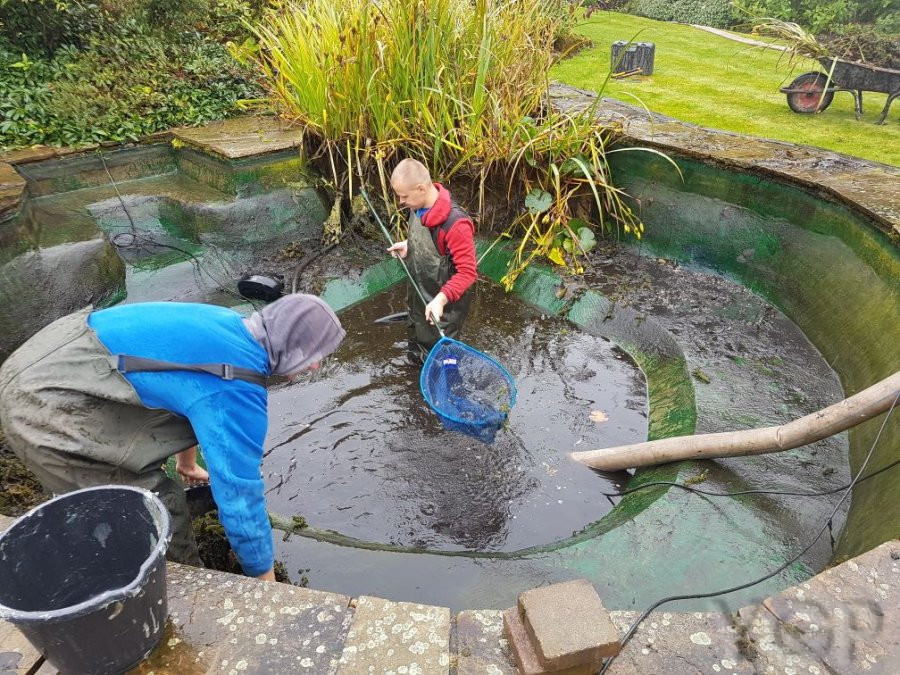For some people, maintaining a pond may be a task too tedious, so they shy away from keeping one in their yard, but missing out on the various benefits that a lagoon in your garden can bring. The step involved in cleaning a pond that is quite challenging is when you drain it. It can both be costly and laborious. However, it doesn’t have to be. If you stick with me, you will learn how to drain a pond and realize that it can be as easy as doing your laundry, doing the dishes, and other chores that may seem tough at first, but gets easier and simpler as you get better at doing them.
Keep your mind open to the many ways that you can drain a pond without all the hassle. In fact, in as little as an hour, it can be accomplished given the right strategies and equipment. The approximate time that it will take is dependent on the size of your pond and how much water you are planning on emptying from it.
Before delving in numerous ways to drain a pond, you need to get an understanding of the reasons behind doing it. Do you just do it to change the water or there may be other benefits to it?
Drain a Pond – Why or Why not?
Draining a pond is a decision that you make considering the maturity of your marsh. Over time, your pond has already developed a thriving ecosystem. It includes animals and plants as well as a healthy level of bacteria that protect your water from being infested with algae or other hazardous chemicals like nitrates and ammonia which may prove harmful.
When you empty your pond of water, you will likely disturb this mature ecology, and as you refill it with fresh water, the lagoon will need some time to establish the same level of maturity again. Before you decide to dry out your pond, be sure about your objective so you can weigh the pros and cons of doing it. For instance, if you are planning to replace your pond liner because it has wear and tear, then you have no other choice but to discharge all the water in your pond.
However, if you are just looking to give it a nice cleanup, then there are numerous strategies that you can employ to accomplish such, without having to deplete the water from your pond. Some ways to achieve this is to install a net over the lake to catch large debris from above, doing some pond skimming or setting up a pond filtration.
There are strategies in purifying your pond water without ever having to drain it. Decide to drain a pond as your last resort to avoid having to place undue stress on the flourishing bionetwork in it that includes the bacteria population and nitrogen cycle.
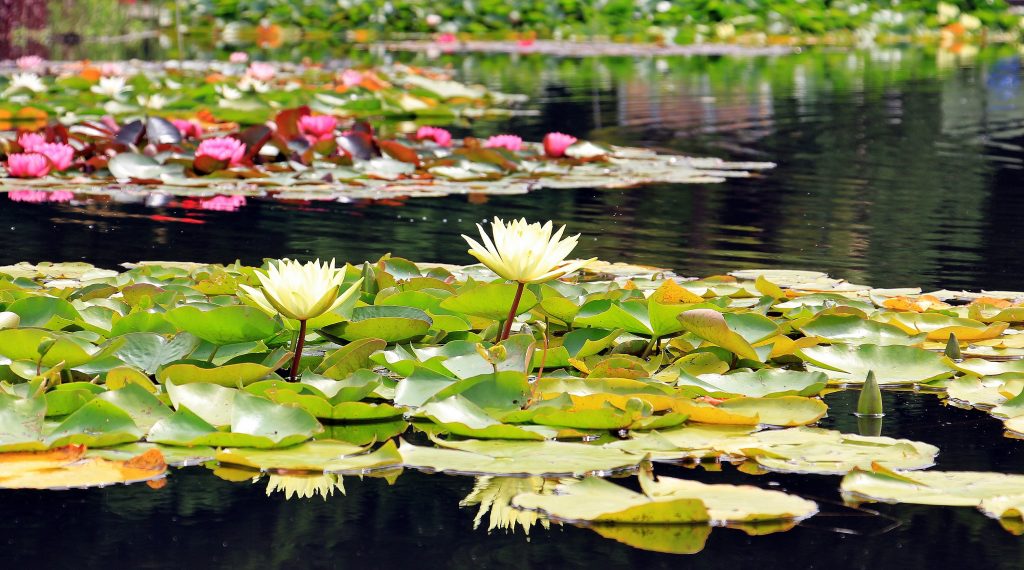
Reasons to Drain a Pond
Some reasons that will compel you to drain a pond are when you need to check the health of your fish, and so you need to get them out of the water and monitor them for injuries and parasite infestation. Also, if you’re taking them somewhere else, then it’d be easier for you to capture them when the pond water level is low.
Other purposes may be, if you are meaning to effect some water changes into your pond to improve the growth and health of your fish by replenishing trace minerals into the water and reducing the harmful chemicals such as nitrates, among others.
Another motivation to emptying your pond water is when you want to repair or completely replace your pond liner, as mentioned earlier, or you are planning to do an overhaul and redesign of your water lagoon.
How do you Drain a Pond?
Drain a Pond via Pumps
If you want the task to be as easy as possible, you will need to utilize a pump to do the heavy lifting in emptying your pond of water. Today, there are various types of water pump that you can choose from depending on the amount of time that you can devote to accomplishing the task and the overall size of your pond.
Hand Pump

Using a hand pump may be hard work, but if you own a relatively small pond, this will do. If you have the physical ability to manually pump water out of your pond because it’s not so big that will require you to buy electrical equipment, then you save tons of money and can still effectively fulfill your goal.
To give you an idea of the amount of time needed to complete the task by using a hand pump, a standard hose can transport water through it at a speed of 2-10 gallons every minute while a hand pump can work at a 5-10 gallons every minute flow rate. In this analysis alone, you can see how a hand pump makes the work substantially quicker. Given this information, you can say that 100-gallon pond water can drain in 10-20 minutes, but the same amount will take ten times slower without the hand pump.
With a moderately little marsh, a hand pump will work wonders in helping you siphon off water and effectively accomplish to fully drain a pond if you are willing to work your body and are patient enough to wait until it is done.
Solar Powered Pump

Another option that you can use to drain a pond when you have time to spare, and you’re not in so much hurry to complete the task is to use a solar-powered pump. This equipment is also ideal for smaller ponds because of the slow drainage method it can provide. Typically, it’s the constructed ponds which are less massive as they are performed to fit in a garden or yard.
Because the source of power for this type of pump is the energy derived from the sun, the best time to use it is during the hot summer months when the sun is shining the brightest and strongest. With its slow rate of draining, downtime will not help, so it’s ideally used for small ponds where a longer time to devote to the task will not be so much of a problem.
The fantastic thing about solar-powered pumps is that they can double as an aeration feature for your pond. As may be apparent to pond owners, this helps provide oxygen to your lagoon and moves the water around for the overall cleanliness and health condition of your pond animals and plants. Solar-powered pumps are designed to have lift height but are still recommended for shallower and smaller ponds, so it’s easy to infuse water into your garden where your pond is.
The ideal solar-powered pump can provide you with a 200 to 500 GPH flow rate, with its large solar panels. Typically, when you have a high GPH, the height of the pump will also be higher. Because the source of energy is the sun, this type of pond pump is meant for ponds which are located in isolated areas where it will be challenging to connect to an electrical outlet.
When you look for solar-powered pump models in the market today, you will find out that as you buy, retailers often provide you with all the peripherals needed as well, including the hose piping. If your pond is way off your residence, then you can choose to buy cable extensions.
Submersible Pump
This type of pump is the one most preferred by pond owners since it can help you drain your pond the fastest. All you need to do with a submersible pump is to connect it to your lagoon, and to the place where you are planning to empty your pond water and then the job is complete. Preferably, you will want to discharge the pond water to your garden as the nutrients and minerals collected in it can be a source of fertilizer to the various plants in your yard.
The first step to depleting your pond with water using a submersible pump is to set up the equipment in the area of your lake with the most considerable depth. This method is to ensure that your draining task will proceed in one go and you can empty your pond as fast as you could.
It’s essential to take note of the lifting power of your submersible pump in terms of water height. Most models will have a cap on its head height which will tell you how high it can push your water out of the pond when you are draining before power drops. Knowing this information will give you direction as to how deep you can set up your submersible pump for maximum draining effort, especially if your pond is specially dug deep.
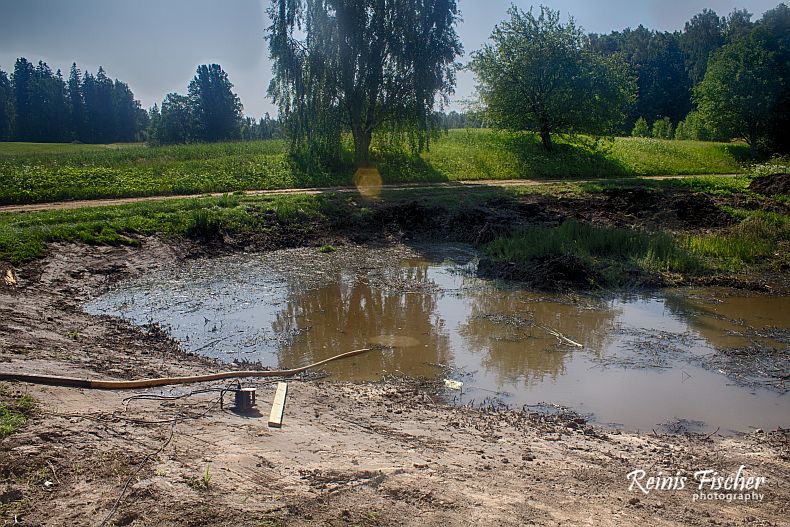
External Pump
Though the submersible pump is still the one highly recommended for more in-depth and more extensive ponds, you may consider an external pump if you know how to set it up effectively. This pump may work as much as a submersible pump if you can extend the depth at which it can reach through a hose extension. Compared to the submersible pump, an external pump is more energy efficient. If you have a pond that is over 8,000 gallons in size or even more significant, your savings will be much more apparent.
Because the external pump is not submerged underwater, it also has significantly better flow rates and height potential than any other pond pump. Submersible pumps are designed for ponds with 10,000 gallons or less since the power required to push water out becomes greater with increased water pressure and volume at deeper levels. In fact, at some point, it is outright uneconomical to use a pump if the water is too deep and the power required to drain skyrockets.
An external pump will not have this problem. Since it sits atop your pond and not below, it has a better rate of water flow, measured in horsepower (HP), not the typical gallons per hour (GPH) as it can move around ten thousand gallons or more per hour.
This pump is also easier to operate, clean and maintain since it doesn’t get sunk in the water. It can collect debris, and other particles from the pond and you won’t have to deal with clogs. If you don’t have much time to spare in cleaning off your pump. This will be an excellent choice for you.
Those who own a pond and who have been cleaning them for years still attest to the submersible pump as a better alternative. But you can choose to have an external pump as backup equipment if you drain your pond often and you want to save on time and money.
Drain a Pond via Vacuum Cleaner
A vacuum cleaner built for ponds is not typically used to drain them but primarily utilized in cleaning. They are widely appropriate for tasks that involve sucking up sludge and other muck in your pond. Also, removing algae, and giving your lagoon a general scrubbing and washing. However, there are vacuum cleaners that have effective discharge system that you can take advantage of to empty your pond.
If you haven’t purchased a pond pump, but you have a vacuum cleaner. Check out its capacity to suck while running the equipment. Some models will require you to shut off your suction and switch to a discharge mode. But others can run both tasks together without problems.
One such example is the Oase Pondovac 5. It can effortlessly drain water while cleaning your pond with its built-in discharge system that runs automatically while it does the cleanup. This feature comes in handy when you want to finish your task of cleaning. And also to drain in as little time as possible. If you have time to spare, then a separate mode for both may be acceptable. Especially if your pond is on the smaller side. But if you have a massive lake, then fulfilling both tasks together will be a definite plus.
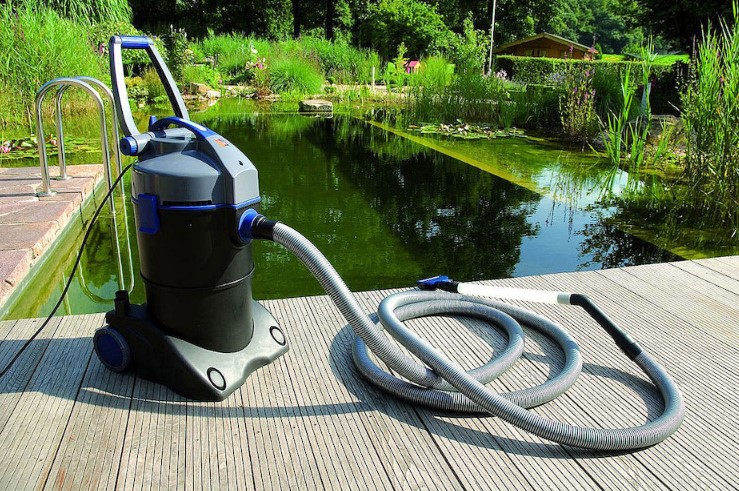
How does the vacuum cleaner accomplish this? Thanks to its separate chambers the vacuum can suck water from the pond. Then fill one chamber, while the other one empties. An outlet hose is connected to the chamber that discharges the water. On the one hand, the other is always ready to collect as the vacuum aspirates from the pond.
Your vacuum cleaner will also come with quite a lengthy hose at 16″ for suction and 32.8″ for emptying. So you can discharge your pond water farther from the location of your lagoon if you need to. There is always the option to buy a longer hose if you need to extend further away.
Though the task of draining your pond is still best accomplished with a pond pump. Keep the option to use your vacuum cleaner in mind as a feasible alternative.
Drain a Pond with No Pump
If you don’t own a pump, there is no need to worry. Because there is a way to drain your pond with a simple method. It may be a bit tedious but if your lake is not massive, then it will work effectively. If you understand the principle behind the flow of fluids.
Before you start, you need to prepare the necessary tools such as a siphon hose, rock or brick and a nozzle. If you only have a standard garden hose, then you can use that in place of the siphon type.
The first step is to plug your garden hose to your faucet. Then extend it to the place where you will empty the water. If your tube cannot cover the entire length, then you can consider adding an extension to it to suffice. Attach a nozzle to the other end of the garden hose and then turn on your water source. Make the necessary adjustments to your nose to check if it’s in good working condition. This means that it can hold water in and can let it flow out if necessary.
When the hose fills up with water, close up the nozzle and turn your spigot off. Then, disconnect your hose from it. Hold your tube vertically to trap the water in. Then go to a place which has a lower elevation compared to your pond. This area is ideally the location where you will discharge your pond water. Hold the nozzle and settle it comfortably on the ground and then place the other end to the pond.
It will be best to choose the deepest part of your pond as the area where you will sink your hose. Use the brick or rock which you earlier prepared to hold down the tube. This step is to help your hose stay underwater and siphon without interruption. This part is essential, or else your manual siphoning won’t work. And you will have to repeat the process all over again.
You can then open up the nozzle where your pond water will drain. A and then fluids will immediately rush out as it should.
Why does it work?
This method is effective because of the Bernoulli Equation. Without going into scientific details, the strategy works because of the water cohesion. It happens inside the hose which you filled with water and as the liquid flows out of the open nozzle. Water is sucked in the other end while pulling pond water with it.
Where to drain a pond?
While most people will choose a sewer or a drain to discharge their pond water. You may consider emptying it onto your garden. As earlier mentioned, this fluid has numerous nutrients and good bacteria that can act as a fertilizer to your plants. It contains nitrates and phosphates that has chemicals in commercially sold fertilizers. But you have the option to source it naturally and for free.
If you don’t have plants that will benefit from this natural fertilizer. Then you can just drain your nutrient-rich pond water onto your lawn or on some of your bushes and trees. The water will sink deep into your yard and will even benefit nearby shrubs and plants in your area.
Things to Do After you Drain a Pond
When you drain a pond, your objective may likely be to clean it. Moreover, provide a better-quality environment for your fish population. Apart from this, you can also take advantage of this time. Since you invested quite a bit of effort into completely draining your pond. To check up on your fixtures that are submerged in the lake. You cannot check them regularly because of the water but this time you can. This equipment is your light fixtures, your filters, and others. The ones that you set up in your pond to help aerate, circulate and filter your water.
You can also take this time to check on your pond liner if you have one. If it has not been torn and continues to protect your pond. As you power wash your basin to eradicate all the built-up muck and sludge. Give the entire perimeter an excellent checkup. And make sure that everything is A-Okay before you start refilling.
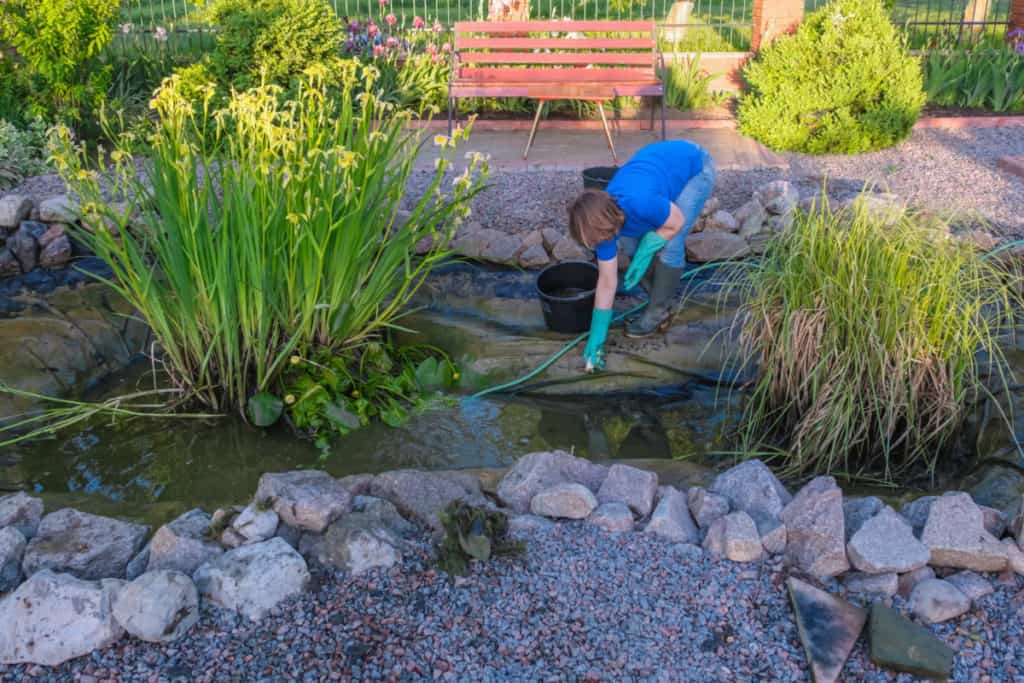
You will be likely to introduce water back to your pond from the tap. So remember the following tips to make sure that your fish will assimilate back into the lake without problems.
Dechlorinate
Water from the tap contains high levels of chlorine and chloramine that cannot support beneficial bacteria in the water. If you don’t treat this, your fish will not be able to benefit from the good microorganisms present in the water before you drained. This scenario will directly impact other organisms in your pond. The best way to deal with this is to do a dechlorinate the water before introducing your fish back in.
There are several methods of dechlorinating which you can read up on to do it right.
Add good bacteria
As discussed, your tap water will not have the good bacteria that your fish need to thrive and flourish. When you drained your pond, all these microorganisms went with it and is now benefitting the plants in your garden. This part will be an excellent time to add good bacteria. You can buy it from online and physical stores. So that your pond will be teeming with healthy fish all the time. A robust ecosystem will be sustainable by taking this essential step.
Perform quality tests
As a last but important step, it will be useful if you conduct quality tests to your water first. Before you put your fish back in. This part is to ensure that they will be safe and healthy in your new pond water. You can check for levels of nitrites, ammonia, pH and KH. Even if you just did a partial drain to your pond water, these must still be checked and monitored. Because they can fluctuate quickly with the level of pond water.
Final Words
To drain a pond, you need to take stock of what you have at hand. Before you even begin this essential task. You have to know your pond size. The depths in certain areas, its elevation, and the balance between flora and fauna. You have to evaluate how much time you can spend emptying your pond. How often you will have to do this in a year, and the budget that you can allocate. This way, you can either invest in top quality pond pumps or vacuum cleaner. Similar to the ones mentioned in this article.
Otherwise, you can simply trust your skills and the principles of science. For siphoning off water from your pond using manual methods.
Either way, remember to prepare the fresh pond water for your fish and other organisms. By dechlorinating, adding good bacteria and testing for the water’s safety. So that your pond will continue to be in tip-top shape before and after your drain it.
